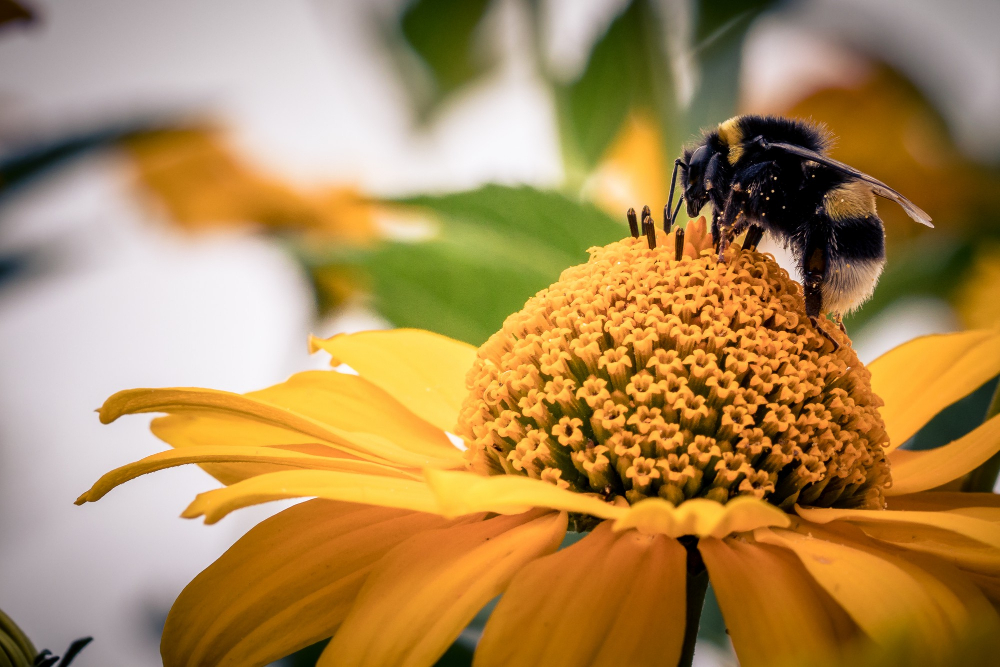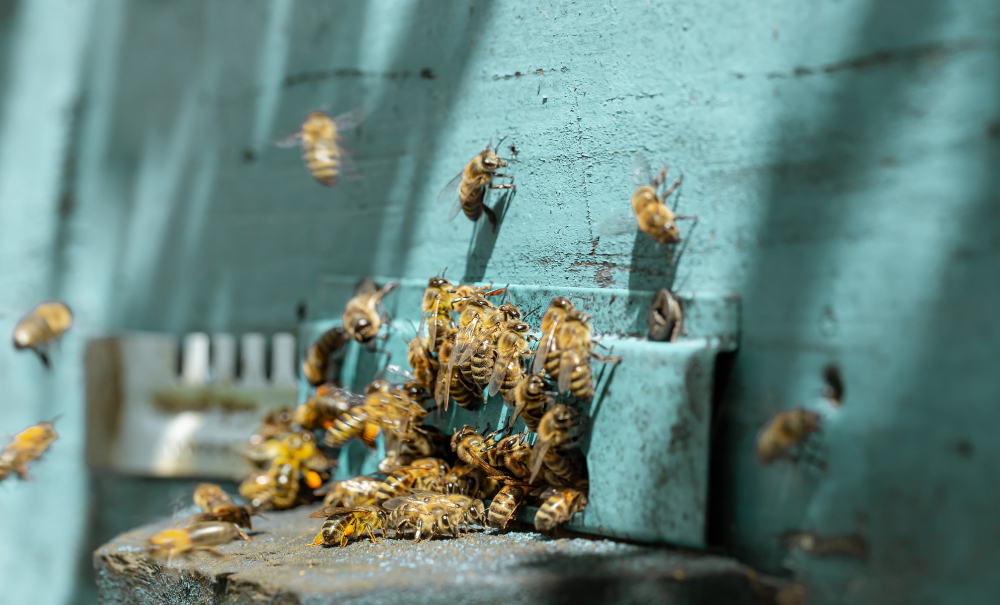Curiosities about bees

Although they seem like simple insects, the world of bees is quite complex and surprising, given that they have behaviors and life forms that we could not even imagine when dealing with such a small animal.
Physique and functions
Although bees follow a basic physical pattern, which usually consists of dark colors with yellow lines on the body, it is certain that their structure and appearance can vary depending on the type of bee.
However, within the same species, we can also see some differences between the queen bee, the drones or the worker bees.
Queen bee: it is the only fertile female in the hive, which is why it is characterized as the queen bee, thanks to its great development of ovarian structures, which also makes it the largest bee. In addition, they have longer legs and a larger and longer abdomen than the worker bees that are part of the hive. However, their eyes are a little smaller.
Drones: are the male bees, whose only function in the hive is to reproduce with the queen bee to produce offspring. Unlike queen bees and workers, drones have larger, thicker and heavier rectangular bodies. In addition, they lack a stinger and have noticeably larger eyes.
Worker bees: they are the only infertile female bees in the hive, so their reproductive systems are atrophied or poorly developed. Its abdomen is shorter and narrower, and unlike the queen bee, its wings span the entire length of its body. The role of worker bees is to collect pollen and manufacture food, construction and protection of the hive and the care of other specimens that are part of the swarm.
Bee feeding

Among the main foods of these insects, we can highlight honey, source of the sugars needed by bees and made from the nectar of flowers, which they absorb with their huge tongues for digestion inside the hive.
The flowers they come from can be varied, but it is common to find them feeding on those more striking colors.
They are also responsible for consuming pollen, as in addition to providing essential sugars, proteins and vitamins, such as those of group B, it also allows the development of the glands that produce royal jelly.
And here comes another of the curiosities about bees, royal jelly is the exclusive food of the queen bee and young workers, given that it is capable of developing adipose bodies in the winter period, ensuring survival in the coldest periods.
Knowing their reproduction
If you’ve ever wondered how bees reproduce, know that the queen bee is the only fertile female in the entire hive. That is why she is the only one capable of reproducing with the drones, giving way to fertilized females.
After reproducing the nuptial veil or fertilization veil, which consists of a coupling in the air between the two during which the spermatozoa are transferred from the copulatory organ of the drone to the spermatheca or deposit of the queen bee.
Days after fertilization, the queen bee begins to lay thousands of eggs in the channels, where the larvae of male bees or larvae of female bees will emerge.
The queen bee has the ability to store the sperm of numerous drones to lay eggs over a period of approximately three weeks. So, taking into account the daily amount of eggs that are laid.
Bee behavior

In addition to employing pheromones for reproduction, they can also play an important role in bee communication and behavior.
For this reason, depending on which pheromone they secrete, we can know if there is a danger near the hive or if they are in a place rich in food or water, among others.
However, to communicate they also use body movements or a dance mode, following a pattern determined and understood by them.
As we can see, they are surprisingly intelligent animals, as are other social insects such as ants.
Deixe um comentário